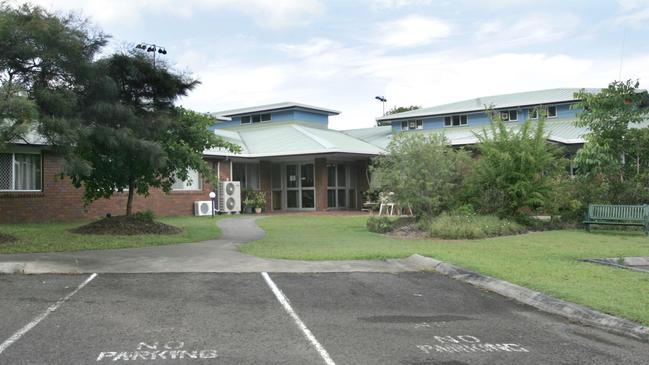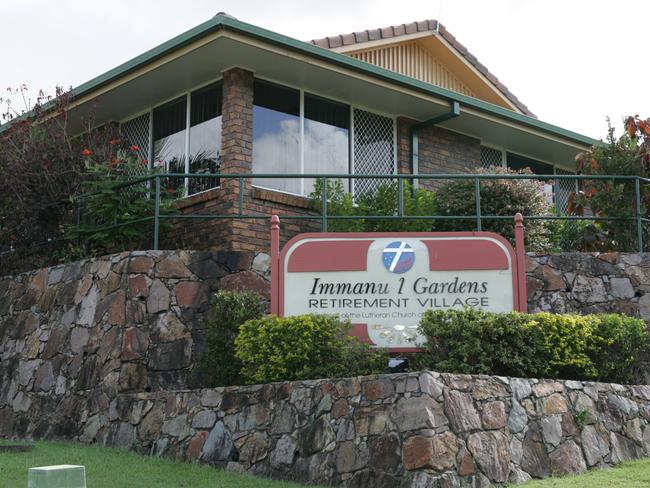Coroner finds ‘unsafe medication practices’ at nursing home contributed to woman's death
A coroner has found the ‘unsafe medication practices’ at a Queensland nursing home contributed to an 81-year-old woman's death.

QLD News
Don't miss out on the headlines from QLD News. Followed categories will be added to My News.
Unsafe medication practices at a Sunshine Coast nursing home contributed to the death of an elderly patient who was wrongly administered anticoagulant drugs while suffering from a brain bleed, a coroner has found.
Elaine Lillian Redmond, 81, died on January 2, 2021, about two weeks after a fall at her home in which she hit her head and suffered a subdural haematoma.
In findings handed down by Coroner Christine Roney on Wednesday, she found Ms Redmond, who suffered from Alzheimers, was previously prescribed an anticoagulant drug to treat atrial fibrillation.
After the fall at her home on December 21, 2020, Ms Redmond was treated at the Nambour Hospital before being discharged to a respite placement at the Immanuel Gardens nursing home on December 23.
“Importantly a decision was taken to cease her anticoagulant medication Rivaroxaban because of its propensity to increase bleeding,” the coroner said.
“Nursing home records however revealed that Elaine continued to be administered Rivaroxaban on 25, 26, 27 and 28 December 2020.
“This administration was contrary to the hospital discharge summary provided to the nursing home.”

Coroner Roney heard evidence the dispensation of Rivaroxaban was consistent with the earlier records from Ms Redmond’s general practitioner but that advice was superseded by the hospital advice in light of the intracranial bleed.
“On 29 December 2020 Elaine was found by nursing home staff unresponsive in her bed,” she wrote.
“She was conveyed to Nambour Hospital. There it was identified that her deterioration was likely caused by the advancement of her subdural haematoma.”
Ms Redmond died days later on January 2, 2021.
Expert witness doctor John Baker raised concerns about Ms Redmond being released from the Nambour Hospital, saying: “If deterioration was expected and repeat CT scanning was planned, it may have been more prudent for Ms Redmond to have been observed in the acute hospital setting, where there are nurses experienced in maintaining regular neurological observations around the clock to identify a deterioration early”.
“It is more likely than not that the continued administration of Rivaroxaban from the 24th of December influenced Ms Redmond’s outcome adversely,” he said.
“With respect to the continuation of Rivaroxaban, this is an oversight with a greater than 50 per cent risk of adversely affecting the outcome of the subdural haematoma.”
Dr Baker noted the discharge summary from the hospital did not specifically highlight the cessation of the anticoagulant.
“I have some concern about the degree and quality of the observations performed on Ms Redmond at Immanuel Gardens,” he said.
“This opinion is formed solely on the records provided in the materials I have reviewed.
“The absence of the use of the Glasgow Coma Scale at Immanuel Gardens suggests a lack of experience in undertaking detailed neurological observations and identifying the early signs of deterioration due to an intracranial haematoma.”

The coroner found Ms Redmond’s cause of death was caused by a “subdural haemorrhage from a fall and was administered anticoagulants which increased intercranial bleeding”.
“The extent of the unsafe medication practices in use prior to Elaine’s death at Immanuel Gardens was significant in my opinion,” Coroner Roney found.
“Poor management of paperwork generally, but specifically here, of post discharge hospital records, led to a use, it seems likely, of both medication orders by different staff at different times.”
Coronial nurse Kate Angus told the inquest she believed Ms Redmond’s death was caused by the subdural haemorrhage resulting from the fall.
“The continued use of Rivaroxaban is likely to have exacerbated the intracranial bleed,” she said.
“However, due to the absence of progress scanning it is unknown whether the enhancement of subdural haematoma is due to spontaneous progression or due to the effects of anticoagulant.”


